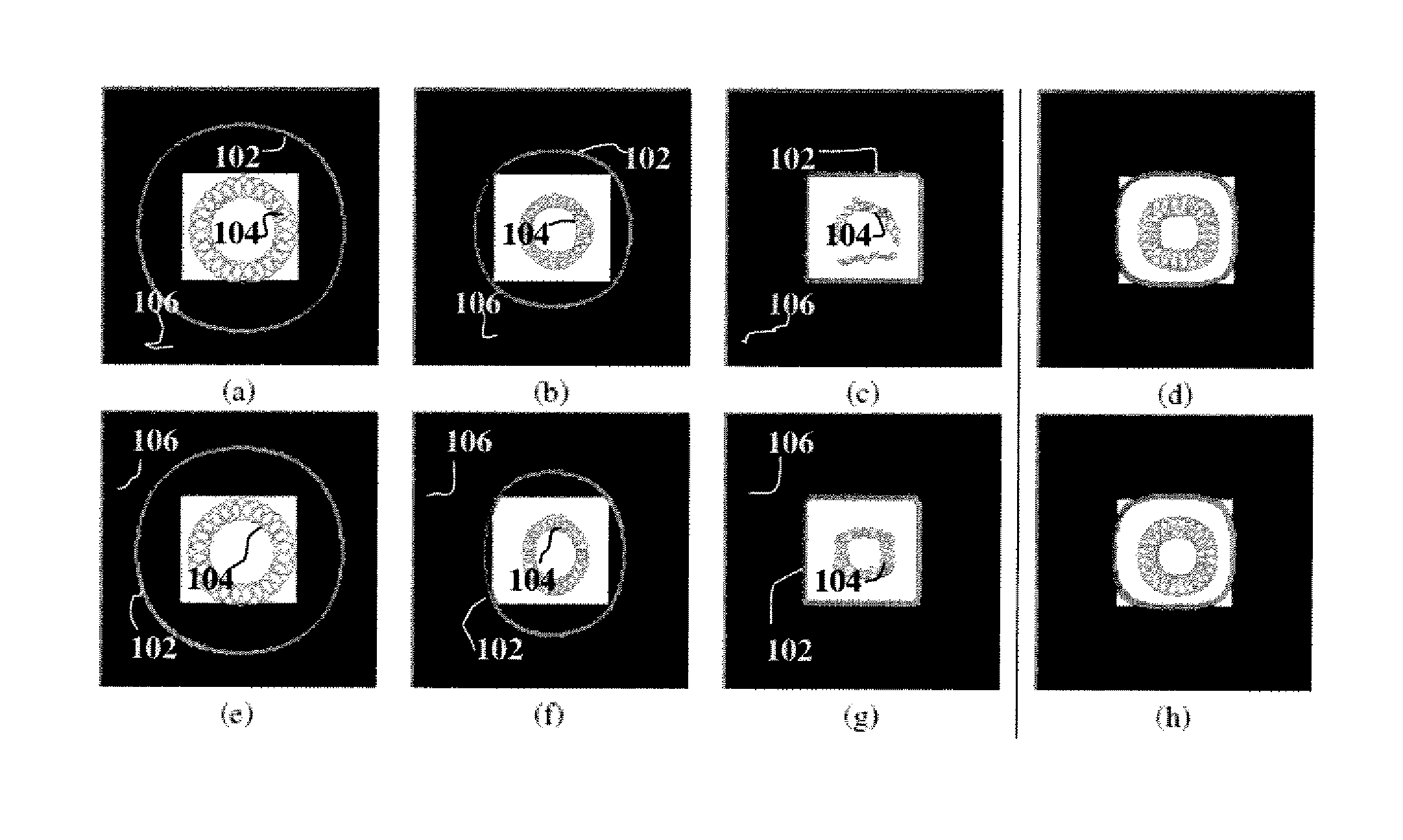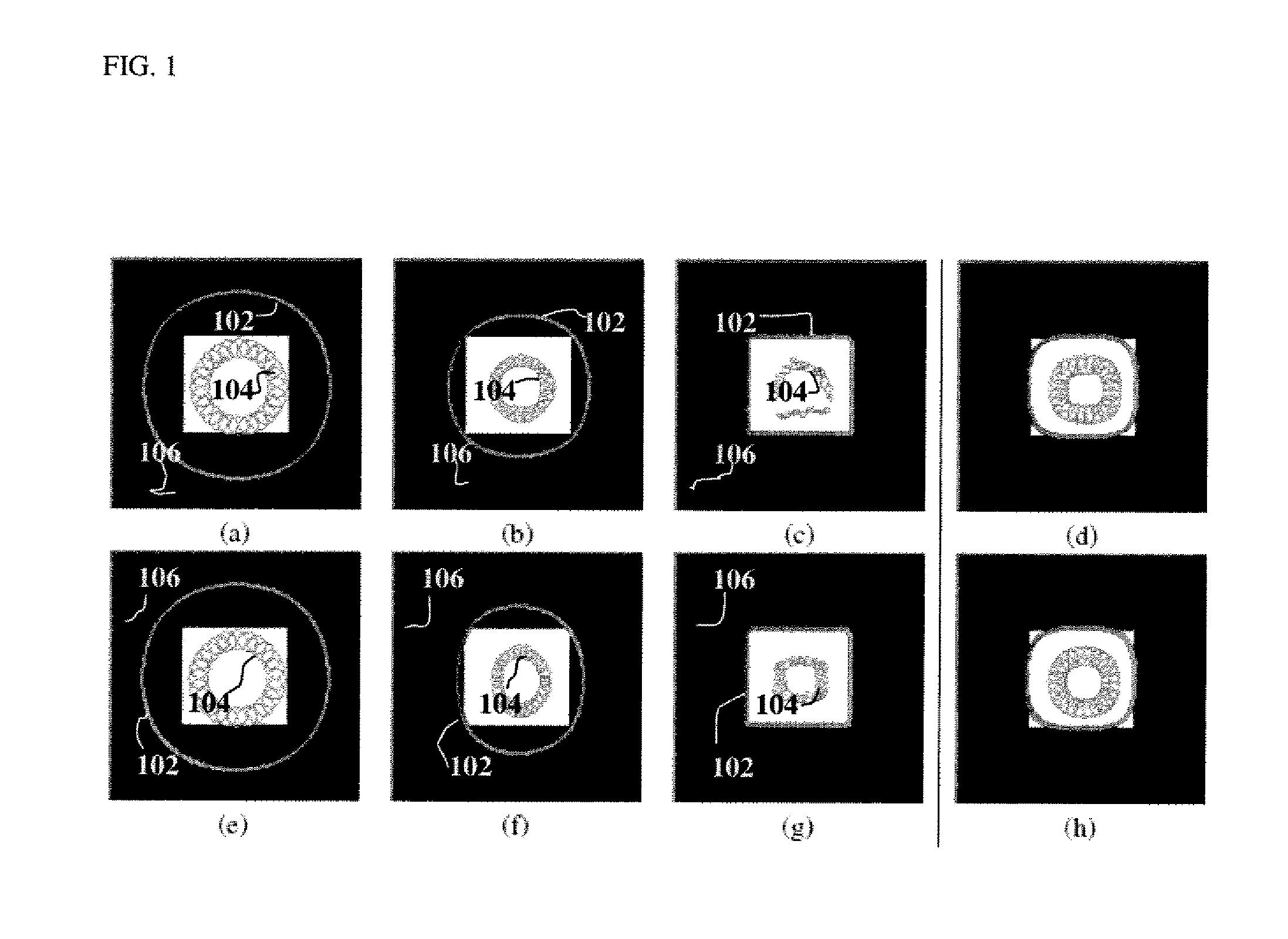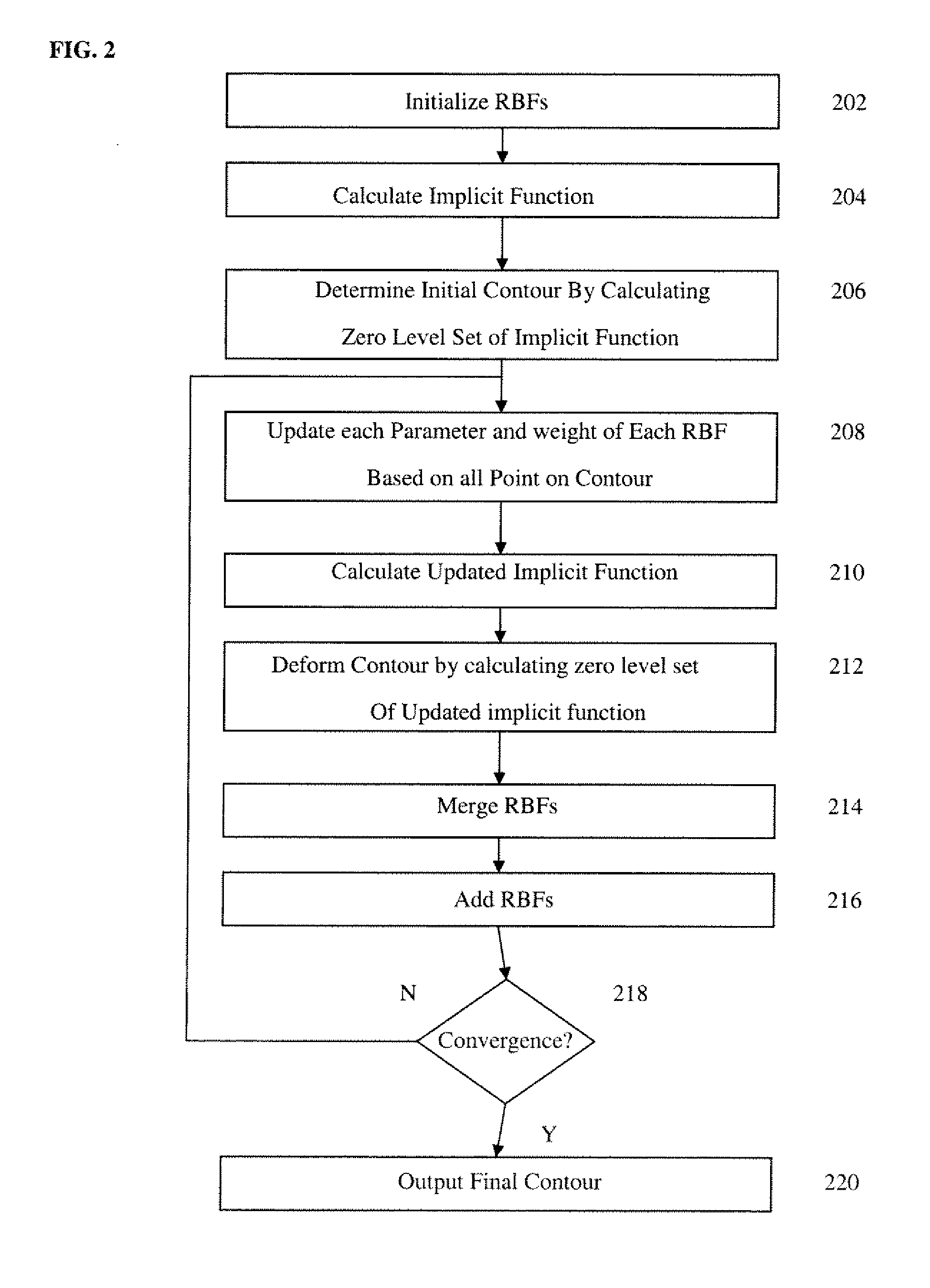Method and System for Image Segmentation by Evolving Radial Basis functions
a radial basis function and image segmentation technology, applied in image analysis, instruments, computing, etc., can solve the problems of complex implementation of such methods, inability to perform topological changes traditionally using a topologically fixed parametric representation, and lack of straightforward mechanisms for topological control
- Summary
- Abstract
- Description
- Claims
- Application Information
AI Technical Summary
Benefits of technology
Problems solved by technology
Method used
Image
Examples
Embodiment Construction
[0018]The present invention is directed to a method for image segmentation using radial basis functions (RBFs). Embodiments of the present invention are described herein to give a visual understanding of the segmentation method. A digital image is often composed of digital representations of one or more objects (or shapes). The digital representation of an object is often described herein in terms of identifying and manipulating the objects. Such manipulations are virtual manipulations accomplished in the memory or other circuitry / hardware of a computer system. Accordingly, is to be understood that embodiments of the present invention may be performed within a computer system using data stored within the computer system.
[0019]Embodiments of the present invention are directed to evolving a set of radial basis functions in order to segment a region or an object in an image. The set of RBFs define an implicit function, and the zero level set of the implicit function is the active conto...
PUM
 Login to View More
Login to View More Abstract
Description
Claims
Application Information
 Login to View More
Login to View More - R&D
- Intellectual Property
- Life Sciences
- Materials
- Tech Scout
- Unparalleled Data Quality
- Higher Quality Content
- 60% Fewer Hallucinations
Browse by: Latest US Patents, China's latest patents, Technical Efficacy Thesaurus, Application Domain, Technology Topic, Popular Technical Reports.
© 2025 PatSnap. All rights reserved.Legal|Privacy policy|Modern Slavery Act Transparency Statement|Sitemap|About US| Contact US: help@patsnap.com



